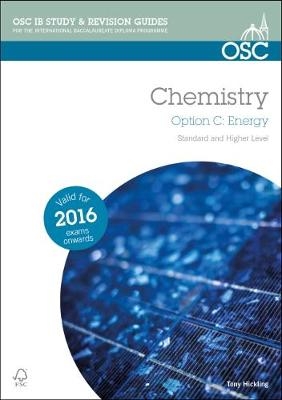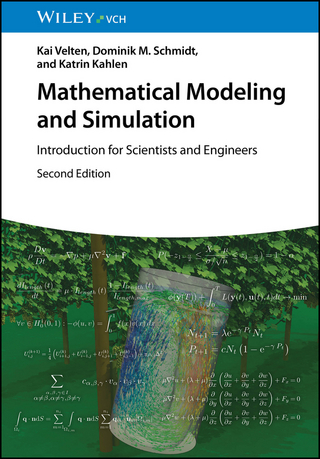
IB Chemistry Option C - Energy Standard and Higher Level
Oxford Study Courses (Verlag)
978-1-907374-97-5 (ISBN)
- Titel ist leider vergriffen;
keine Neuauflage - Artikel merken
This Guide supports study and revision for IBDP Chemistry Paper 3, for students planning to answer questions on Option C: Energy. It reviews all SL and HL topics, summarising the essential information needed for the exam. Coverage includes: energy sources; fossil fuels; nuclear fusion and fission; solar energy; environmental impact and global warming; and photovoltaic cells and dye-sensitized solar cells. Key features: concise definitions of key terms and concepts; worked examples to demonstrate how to apply learning to questions; exam-style practice questions; and clearly presented equations, figures, and tables.
Tony Hickling qualified as a Chemical Engineer before moving into education. He has taught IB Chemistry and Physics since 1986 and worked as an IB Diploma Coordinator at four international schools. He has experience as an examiner and has taught revision since 2012. He is currently Principal of ULink College, Guangzhou, China
Introduction
1. Energy sources
Forms of energy
Conservation and degradation
What makes an energy source useful?
2. Fossil fuels
Energy from fossil fuels
Petroleum (crude oil)
Fractional distillation
Cracking
Catalytic reforming
Octane number
Natural gas
Coal
Converting coal into gas or liquid fuels
Carbon footprint
3. Nuclear fusion and fission
Nuclear fusion
Nuclear fission
Binding energy
Binding energy graph
Binding energy and mass defect
Stars and atomic absorption spectra
Comparing emission and absorption spectra
Nuclear power stations
Nuclear fission reactors
Advantages and disadvantages of nuclear power
Radioactivity
Health risks of radioactivity
Half-life
4. Solar energy
Photosynthesis
Biofuels
Ethanol
Biodiesel
5. Environmental impact and global warming
Greenhouse gases and the greenhouse effect
Mechanism of the greenhouse effect
Global warming and climate change
Carbon dioxide in the oceans
Particulates - global dimming
Three important greenhouse gases
Controlling carbon dioxide emissions
Three energy sources compared
The evidence for man's impact on the environment
6. Electrochemistry, rechargeable batteries and fuel cells (AHL)
Types of cells and their properties
Primary cells
Rechargeable (secondary) cells
Nickel-cadmium cells
Lithium ion cells
Lead-acid cells
Hydrogen fuel cells
Design of a hydrogen fuel cell (acid electrolyte example)
Microbial fuel cell
Thermodynamic efficiency of fuel cells
Nernst equation
Concentration cell
Summary comparison of types of cell
7. Nuclear fusion and nuclear fission (AHL)
Energy from fusion and fission: more advanced calculations
Radioactive decay: more advanced problems
Fuel enrichment and Graham's Law
8. Photovoltaic cells and dye-sensitized solar cells (AHL)
Semiconductors
Silicon solar cell (`photovoltaic cell')
Dye-sensitized solar cells
Comparing dye-sensitized solar cells with silicon solar cells
9. General revision problems on Option C (examination style)
10. Answers to example problems
| Erscheint lt. Verlag | 28.2.2015 |
|---|---|
| Reihe/Serie | OSC IB Revision Guides for the International Baccalaureate Diploma |
| Verlagsort | Oxford |
| Sprache | englisch |
| Maße | 210 x 297 mm |
| Themenwelt | Naturwissenschaften ► Chemie |
| ISBN-10 | 1-907374-97-3 / 1907374973 |
| ISBN-13 | 978-1-907374-97-5 / 9781907374975 |
| Zustand | Neuware |
| Haben Sie eine Frage zum Produkt? |
aus dem Bereich


